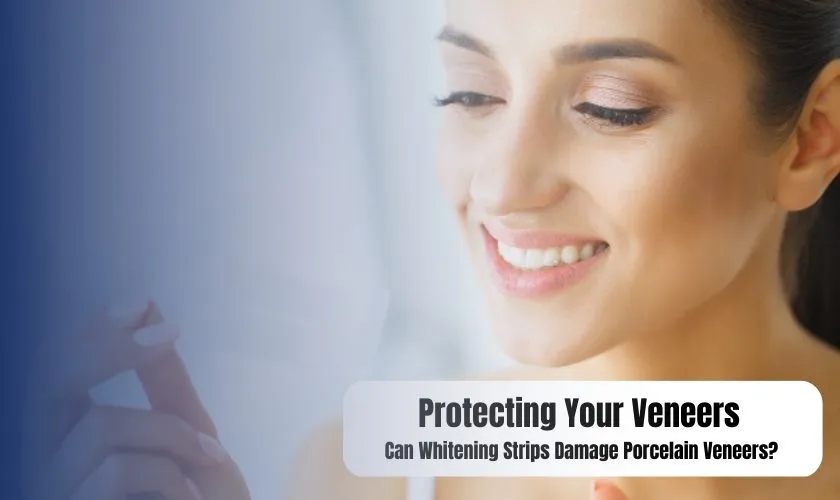What are Veneers and Whitening Strips
Veneers and whitening strips are both popular choices in the realm of cosmetic dentistry, each serving a distinct purpose in enhancing the appearance of your smile. Veneers, thin shells typically made of porcelain, are custom-designed to cover the front surface of teeth, improving their shape, size, color, or alignment. They offer a comprehensive solution for aesthetic imperfections, providing a durable and natural-looking enhancement. On the other hand, whitening strips are over-the-counter products designed to lighten the enamel of natural teeth. They contain bleaching agents, usually hydrogen peroxide, that penetrate the enamel to break down stain molecules, resulting in a brighter smile. Understanding the fundamental differences between veneers and whitening strips is crucial to determine the most suitable approach for achieving your desired smile enhancement.
The Composition of Veneers
The composition of veneers significantly influences their interaction with whitening treatments. Most veneers are crafted from either porcelain or composite resin. Porcelain veneers are renowned for their durability, stain resistance, and ability to mimic the translucence of natural teeth, offering a highly aesthetic outcome. Composite resin veneers, while often more affordable, may be more susceptible to staining over time. The non-porous nature of porcelain makes it resistant to the bleaching agents found in whitening strips, meaning that the color of the veneer will not change. However, the bonding agent used to attach the veneer to the tooth, as well as the natural tooth structure underneath, can be affected by whitening strips, potentially leading to uneven coloration or sensitivity. Understanding the composition is important to set realistic expectations regarding the effectiveness of whitening strips on your veneers.
Understanding Whitening Strips
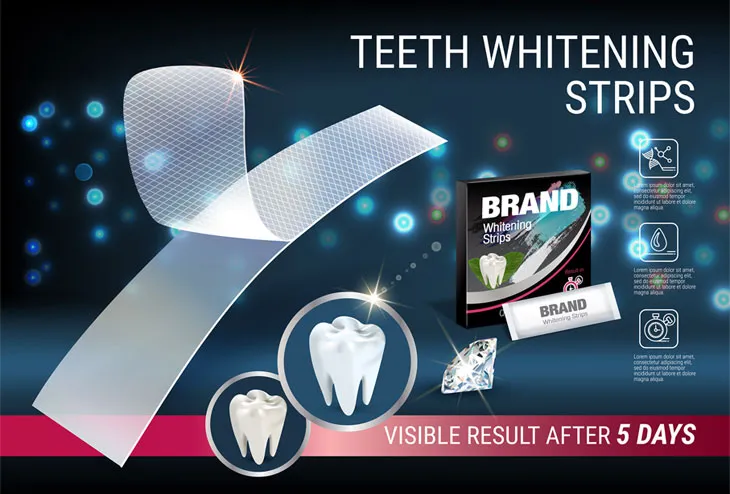
Whitening strips are a widely accessible method for teeth whitening, utilizing a flexible plastic strip coated with a bleaching agent. The active ingredient is typically hydrogen peroxide or carbamide peroxide, which penetrates the enamel to break down stain molecules. The effectiveness of whitening strips depends on the concentration of the bleaching agent, the duration of application, and the frequency of use. These strips are designed to whiten natural teeth by removing stains accumulated from food, drinks, and other substances. However, it is important to note that whitening strips do not work on materials such as veneers. Regular and consistent use of whitening strips can lead to noticeable improvements in the brightness of natural teeth, but their impact on veneers is minimal to none. Understanding the mechanism of whitening strips is essential for setting expectations and determining their suitability for your specific dental situation.
How Whitening Strips Work
The process by which whitening strips work involves a chemical reaction that breaks down stain molecules within the enamel of natural teeth. When the bleaching agent, such as hydrogen peroxide, comes into contact with the teeth, it releases oxygen radicals. These radicals penetrate the enamel and react with the stain molecules, effectively breaking them into smaller, less visible components. The result is a lightening of the tooth’s color, leading to a brighter appearance. However, this process is limited to the enamel of natural teeth. Veneers, being made of materials such as porcelain or composite resin, do not react in the same way. The bleaching agents do not penetrate the veneer material, meaning that whitening strips cannot change the color of veneers. It is crucial to understand this mechanism to avoid disappointment and to seek appropriate methods for maintaining the aesthetic of your veneers.
Whitening Strips and Veneers The Compatibility
The compatibility of whitening strips with veneers is limited because the chemical process of teeth whitening doesn’t affect the color of veneers. Whitening strips work by penetrating the porous structure of natural tooth enamel to break down stains. Veneers, especially porcelain ones, are made of a non-porous material that does not allow the bleaching agents to penetrate and change their color. This means that using whitening strips on veneers will not make them any brighter. However, the natural teeth surrounding the veneers can still be whitened. This can lead to a mismatch in color, making the veneers appear darker in comparison. For optimal results, it is essential to consult a dentist to discuss the best approach for maintaining a consistent and attractive smile, particularly if you have both veneers and natural teeth.
The Impact of Whitening Strips on Veneers

Whitening strips have little to no impact on the color of veneers. The primary function of whitening strips is to remove stains from the enamel of natural teeth, which they effectively do by utilizing bleaching agents. However, veneers, particularly porcelain ones, are stain-resistant and do not react to these agents in the same way. While the surrounding natural teeth may whiten, the veneers will remain unchanged, potentially leading to a color discrepancy between the veneers and the natural teeth. This can result in a less aesthetically pleasing outcome, as the veneers might appear darker compared to the newly whitened natural teeth. Additionally, using whitening strips excessively can cause sensitivity in the surrounding gums and teeth, even if the veneers remain unaffected. Therefore, it is crucial to consider the potential aesthetic implications and consult a dental professional for guidance on the best approach to maintain or enhance the appearance of your veneers.
Material of the Veneer
The material composition of the veneer is a crucial factor determining how it will respond to whitening treatments. Porcelain veneers are highly resistant to staining and are generally unaffected by the bleaching agents in whitening strips. Their non-porous surface prevents the penetration of these agents, ensuring that the color of the veneer remains consistent. Composite resin veneers, on the other hand, may be more susceptible to staining over time, although they are still not designed to be whitened by strips. The porous nature of composite resin can allow stains to accumulate, but the effects of whitening strips are typically minimal. In both cases, the material of the veneer will not change color. Understanding the material of your veneers is important for managing expectations and seeking appropriate treatments.
Type of Stains Present
The type of stains present on your teeth, and the veneers, can influence the effectiveness of whitening treatments. Surface stains, which result from the accumulation of pigments from food, drinks, and tobacco, are generally easier to remove. Whitening strips can be effective at removing these stains from natural teeth. Intrinsic stains, those that originate within the tooth structure, are more challenging to address. Whitening strips are designed to penetrate the enamel and break down stain molecules, but they do not address stains in the veneers. If your veneers have stains, it is typically a sign of damage or wear and tear that requires replacement. For natural teeth, the type of stain plays a crucial role in determining the success of whitening treatments, and the best method to determine if veneers are stained is to check them professionally.
Alternatives to Whitening Strips for Veneers
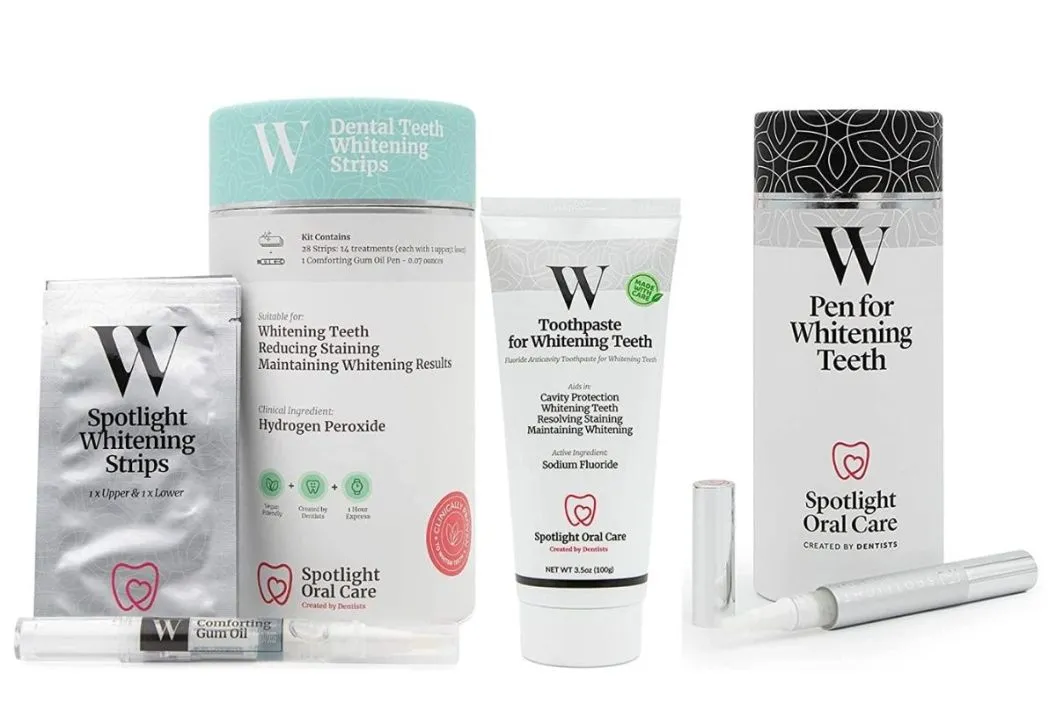
Since whitening strips are ineffective on veneers, alternative approaches are necessary to maintain or enhance the appearance of your veneers. One option is professional cleaning and polishing by a dentist, which can remove surface stains and restore the shine of your veneers. If the veneers have significant staining or discoloration, the most effective solution is often veneer replacement. Another option is to explore microabrasion, a procedure where the dentist removes a small layer of the veneer surface to eliminate minor stains and imperfections. Consult your dentist to determine the best method for your specific needs. Maintaining proper oral hygiene and avoiding stain-causing foods and drinks can also extend the life and aesthetic appeal of your veneers, reducing the need for more intensive treatments.
Professional Teeth Whitening
Professional teeth whitening offers a more comprehensive approach compared to over-the-counter whitening strips, especially when veneers are involved. Dentists can use higher concentrations of bleaching agents, which can be more effective in whitening natural teeth. A professional whitening treatment also allows for the dentist to assess your overall oral health, including the condition of your veneers and natural teeth. They can customize the treatment to minimize any potential sensitivity and ensure the best possible results. Professional whitening is a great option to get natural teeth white before matching the shade with veneers. Furthermore, professional whitening can help address uneven coloration or stains that might appear after the placement of veneers. It is essential to discuss all available options with your dentist. They can provide tailored advice for maintaining a consistent and attractive smile. This includes the appropriate maintenance of your veneers and the whitening of your natural teeth.
Veneer Replacement
Veneer replacement is often the most effective solution for addressing significant staining, damage, or aesthetic concerns with veneers. Over time, veneers can undergo wear and tear, and develop stains that cannot be removed through regular cleaning or whitening treatments. When this happens, the original color and appearance of the veneers can be compromised. Replacing the veneers allows for a complete refresh of your smile, ensuring that your teeth look their best. During a replacement procedure, your dentist will remove the old veneers and take new impressions or scans of your teeth to create custom-made replacements. These new veneers will match the desired shade and shape, providing a more consistent and attractive smile. Veneer replacement is an investment in your oral health and aesthetic appearance, providing long-lasting results that can significantly boost your confidence.
Tips for Maintaining Veneers
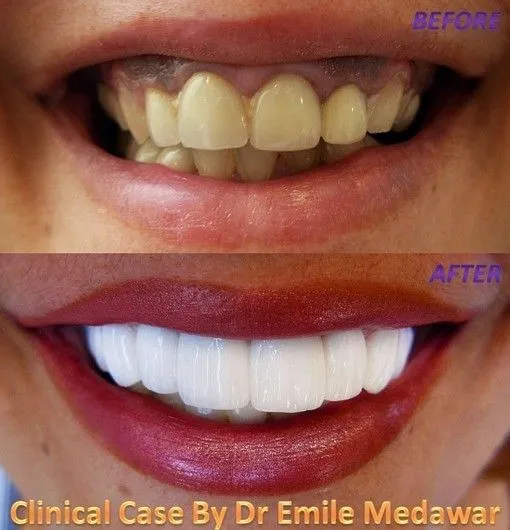
Proper maintenance is essential for preserving the appearance and longevity of your veneers. This includes practicing diligent oral hygiene. Brushing your teeth twice a day with a soft-bristled toothbrush and non-abrasive toothpaste helps to remove plaque and prevent stains. Flossing daily is crucial to remove food particles and debris from between your teeth, preventing discoloration and maintaining healthy gums. Using a mouthwash can further contribute to your oral hygiene. Avoiding or limiting your consumption of stain-causing foods and drinks, such as coffee, tea, red wine, and berries, can also help to prevent discoloration. Regular dental checkups and professional cleanings are essential for monitoring the condition of your veneers and addressing any issues promptly. Following these tips, can ensure you have a healthy, beautiful smile for years.
Regular Dental Checkups
Regular dental checkups are a crucial part of maintaining both the health and aesthetics of your veneers. During these checkups, your dentist will examine your veneers, assess the health of your gums, and check for any signs of wear, damage, or potential problems. Professional cleanings remove plaque and tartar buildup, helping to prevent staining and maintain the natural color of your teeth. Your dentist can also advise you on proper oral hygiene techniques. They can catch any potential issues early, which prevents the need for more extensive treatment in the future. These checkups help ensure the longevity of your veneers, providing you with a confident and radiant smile. Consistent care and maintenance contribute to your overall oral health and well-being.
Proper Oral Hygiene
Maintaining proper oral hygiene is vital for preserving the appearance and health of both your natural teeth and veneers. This includes brushing your teeth at least twice a day with a soft-bristled toothbrush and fluoride toothpaste. This helps remove plaque, food particles, and surface stains. Flossing daily is also essential to clean between your teeth, where a toothbrush cannot reach, preventing the buildup of plaque and reducing the risk of gum disease. Rinsing with an antimicrobial mouthwash can further eliminate bacteria, freshen your breath, and contribute to overall oral health. Choosing the right toothpaste and mouthwash is important, as some abrasive products can scratch the surface of your veneers. Proper oral hygiene not only maintains the aesthetics of your smile but also supports your overall health.
Conclusion
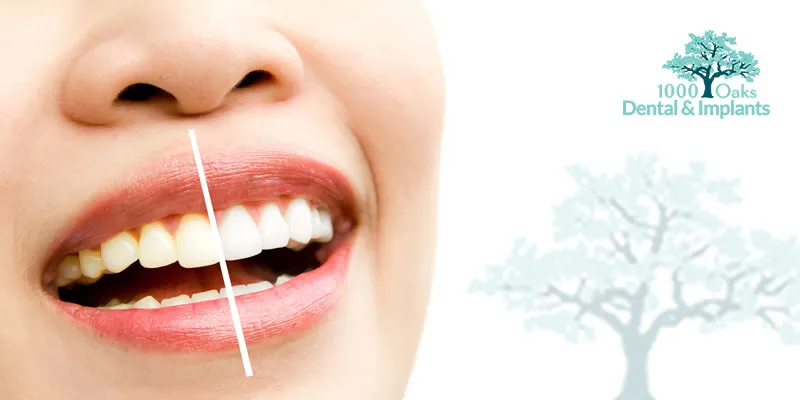
In conclusion, while whitening strips are effective for lightening the enamel of natural teeth, they do not work on veneers. The material composition of veneers, particularly porcelain, is resistant to the bleaching agents in whitening strips. If you have veneers, you should focus on maintaining their appearance through regular professional cleanings, proper oral hygiene, and by avoiding stain-causing foods and drinks. Remember that professional teeth whitening is an option for natural teeth to match the shade of your veneers. Should the veneers become stained or damaged, veneer replacement is usually the best option. Maintaining an attractive smile requires informed decision-making and proper care, so consult with your dentist. They will provide the best guidance for achieving and maintaining a beautiful and healthy smile.
